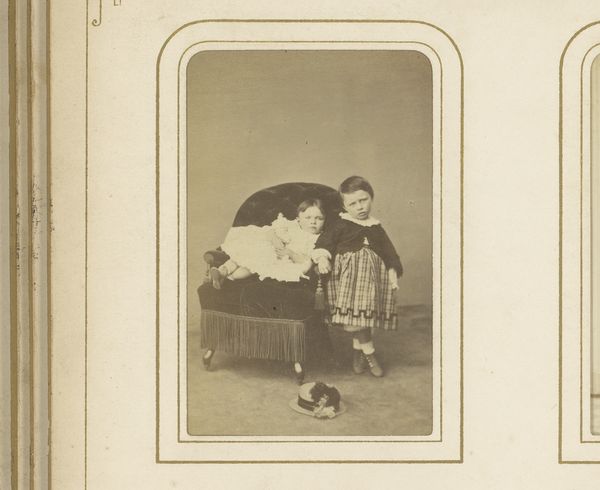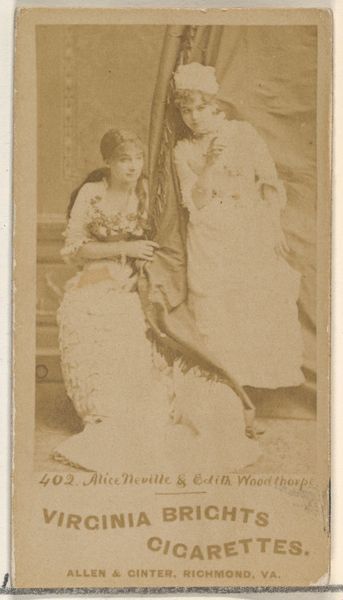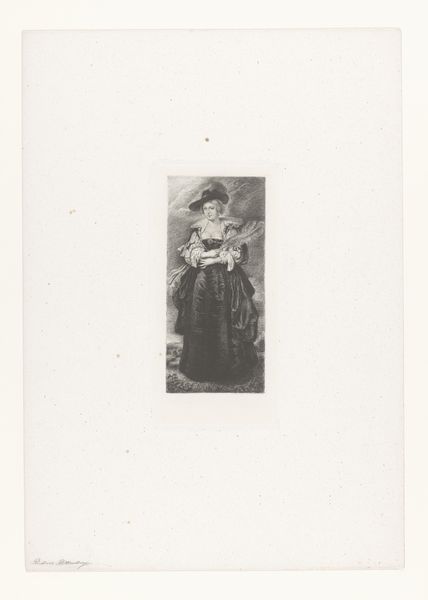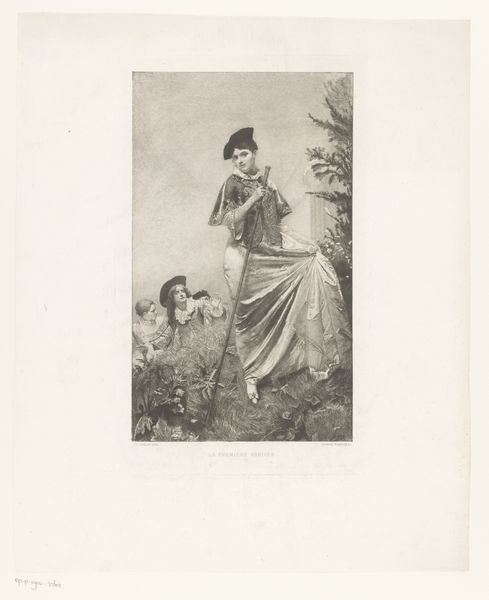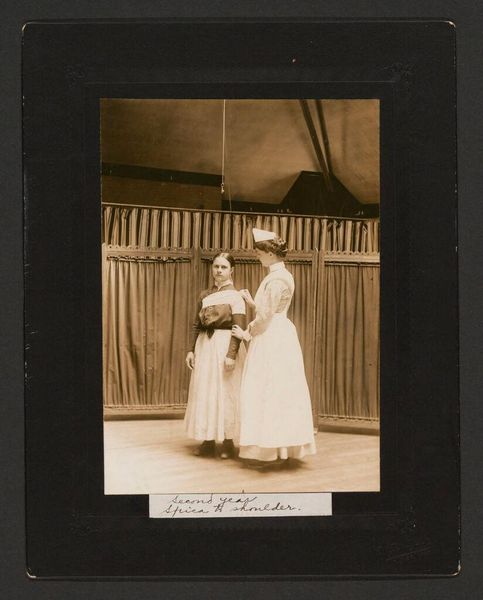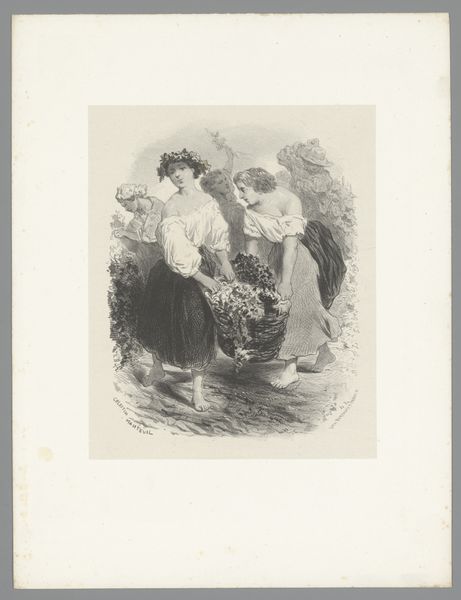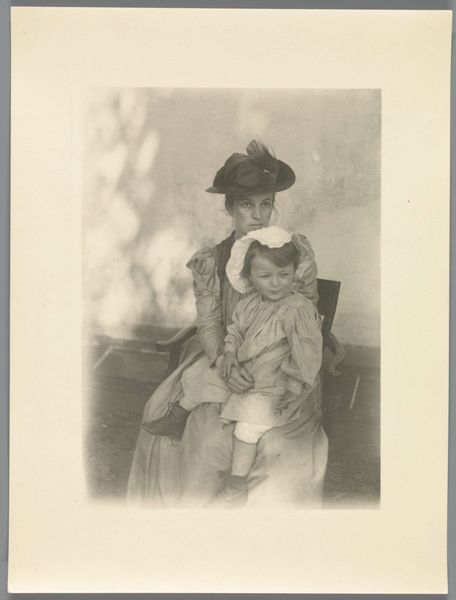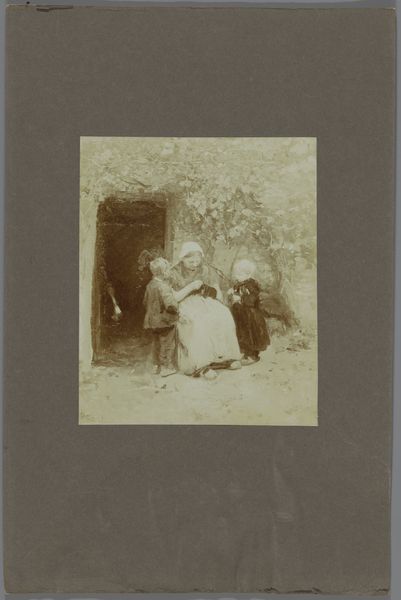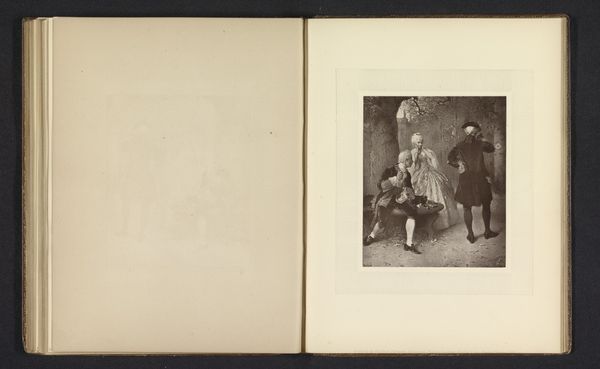
Dimensions: height 153 mm, width 98 mm
Copyright: Rijks Museum: Open Domain
Curator: This gelatin silver print, entitled "Portret van een vrouw en een meisje voor een struik," roughly translated as "Portrait of a woman and a girl in front of a bush," was created by Richard Tepe, likely sometime between 1900 and 1930. Editor: There's something so tender yet reserved about it. The subdued tones and the formality of their attire give it a melancholy, almost dreamlike quality. Curator: Considering Tepe's body of work, primarily commissioned portraits, it makes me wonder about the context of the photograph's production. Who were these subjects? What did the commissioning process involve? The materiality of the gelatin silver print, widely used during this era, points to specific industrial processes, too. Editor: Absolutely. The positioning of the two figures – the woman standing tall and the girl nestled in front – speaks to established power dynamics and the performative aspects of family and femininity at the time. There’s also the carefully chosen background, situating them in nature. What narrative does that construction imply, and who gets to tell it? Curator: Precisely. The seemingly naturalistic backdrop may well have been fabricated through manipulation of the image development and print processes. This act of making complicates the photographic truth that viewers might assume from portraiture of the time. Editor: This tension is palpable. The photograph becomes a historical artifact embedded in its socio-political reality, documenting not just appearance but societal expectations and roles assigned particularly to women. What we see and what we understand often reflects who holds privilege. Curator: Exactly. We need to delve further into the labor practices, class distinctions, and market demands inherent to portraiture in the early 20th century. By understanding its construction, we dismantle the art historical pedestal, if you will, and uncover historical truths through the lens. Editor: I agree, bringing the viewer to critically engage in a dialogue. Perhaps examining the labor involved in fashioning those outfits also lends to further discourse on material consumption as we unpack identities. Curator: Investigating not only its aesthetics, but what and who produced it makes art that much more alive, don't you think? Editor: Undeniably.
Comments
No comments
Be the first to comment and join the conversation on the ultimate creative platform.
